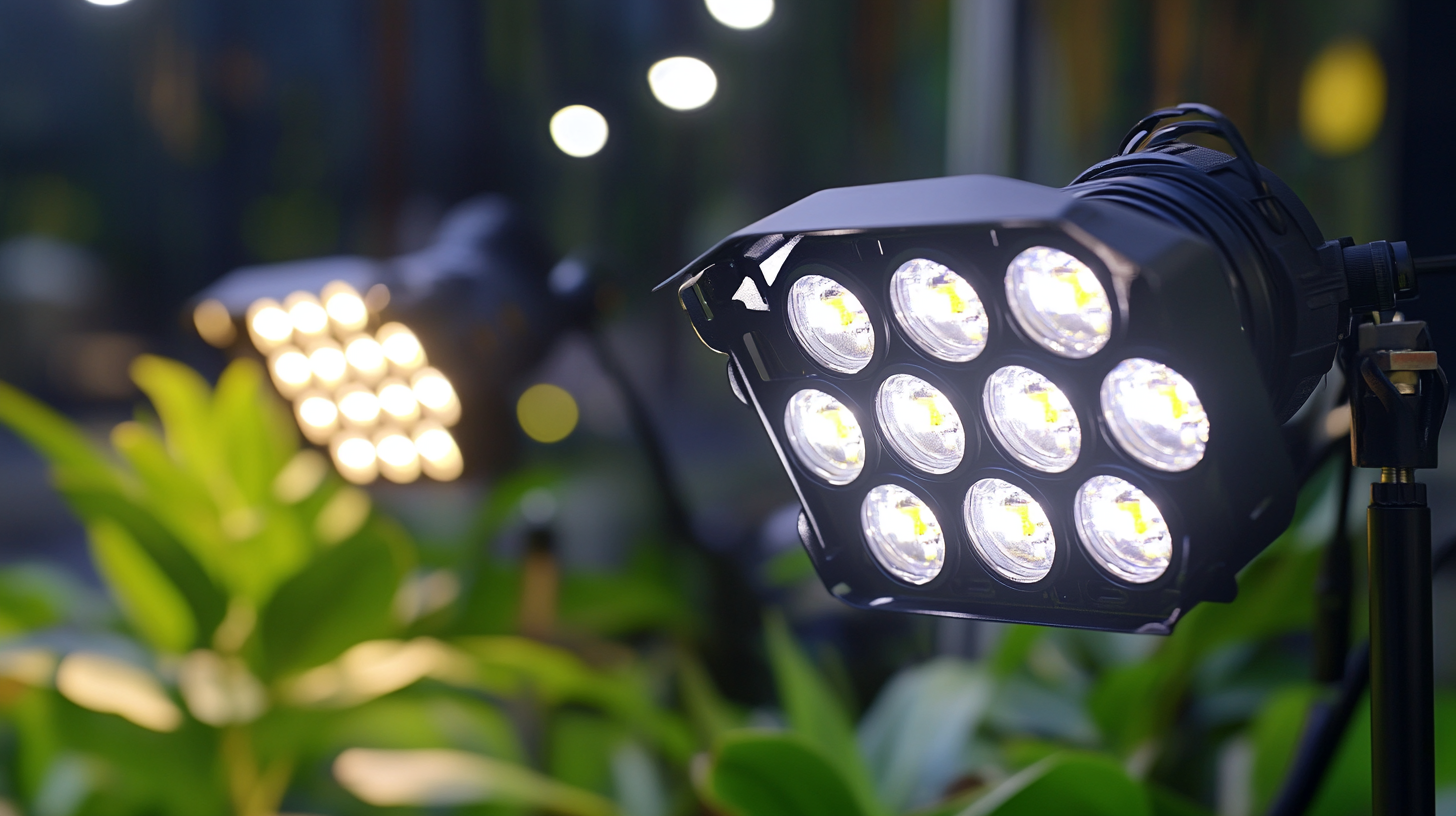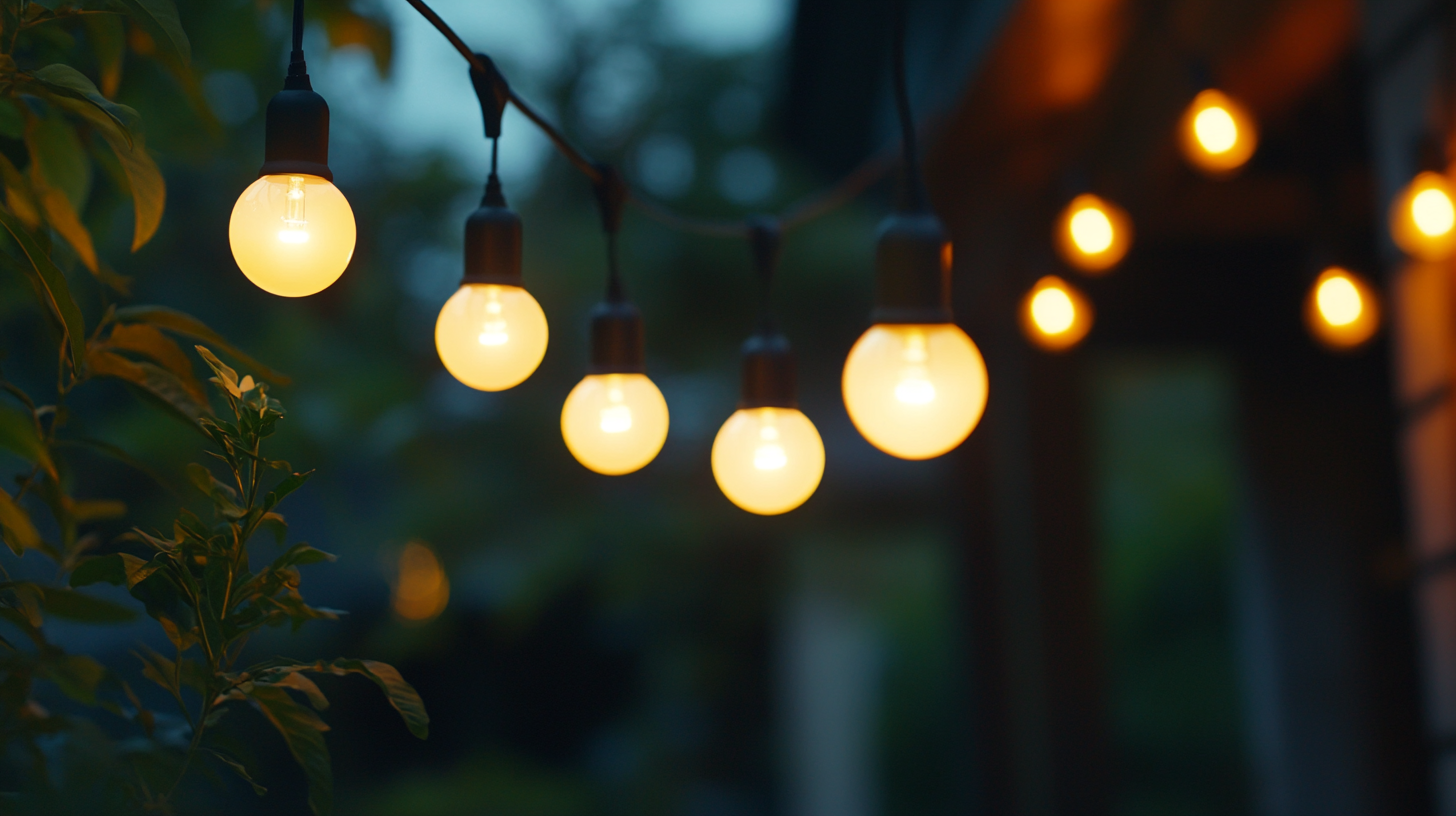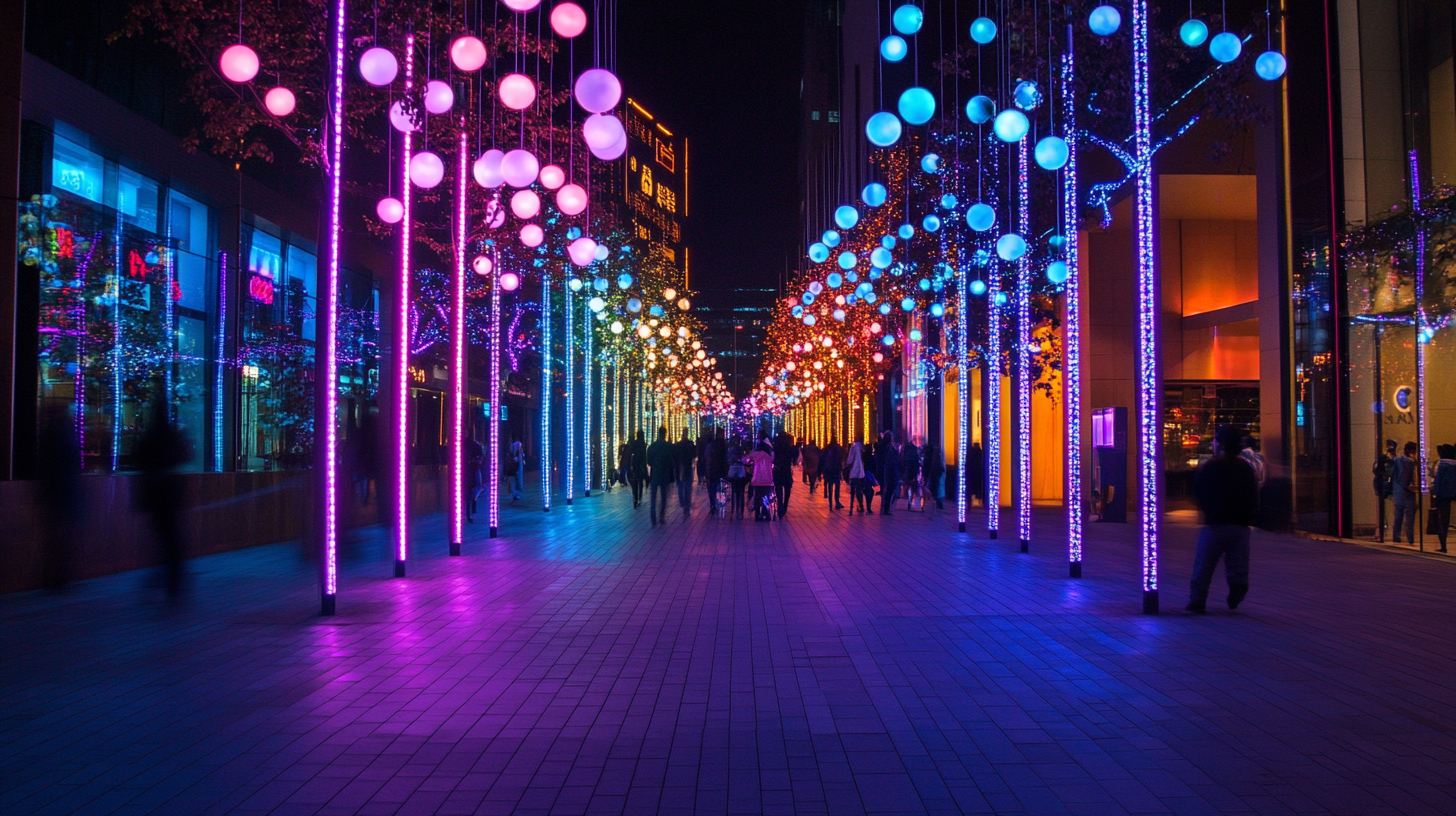Understanding the Importance of Export Standards for Outdoor LED Lights in Global Markets
The recent growth spurts of the outdoor LED lights industry worldwide have been triggered by increased awareness of energy efficiency and environmental sustainability. According to a report by Grand View Research, it is expected that the outdoor LED lighting market will reach $21.53 billion by 2025, expanding at a compound annual growth rate (CAGR) of 13.3%. Most of the growth is attributed to increasing demand for smart city infrastructure and the urbanization trend. As these lights become part and parcel of cities, it is imperative for manufacturers to learn about the export standards which will allow them to penetrate international markets.
They should not be underestimated as standards defining safety, performance, and environmental criteria for outdoor LED lights increase their acceptance across various global markets. Those manufacturers that comply with the standards set by bodies like the International Electrotechnical Commission (IEC) and the American National Standards Institute (ANSI) will find it easier to enter new markets, and it will promote consumer confidence in the quality of products. As competition hots up and the dynamics of the market evolve from time to time, so must the manufacturers understand as well as implement these standards to remain sustainable and thus successful in their internationalization efforts.

The Role of Export Standards in Enhancing Outdoor LED Light Quality
Export standards are critical to ensuring quality for outdoor LED lights in the international marketplace. Quality standards ensure consistency and reliability, key elements in competitive marketing, with increased energy-efficient lighting demand. According to MarketsandMarkets, from 2020 onwards, USD 22.84 billion was expected to reach USD 41.48 billion by 2025 with a CAGR of 12.47% in the outdoor LED lighting. The larger that market grows, the more prominent export standards become. The standards ensure that products fulfill minimal safety and performance requirements, and they may also make it easier to step through all the ways export market access necessitates. For instance, the IEC operates in standardization of electrical light product parameters, including performance aspects like luminous efficacy and endurance under various environmental conditions. The degree of compliance with standards such as these greatly enhances product credibility and customer confidence. Indeed, an International Lighting Association study revealed that about 75 percent of consumers consider quality and compliance with standards one of the critical determinants in purchasing outdoor lighting products. Furthermore, as sustainability becomes a significant factor in product purchasing decisions, export standards are slightly tightening environmental regulations to account for this. An example would be the Ecodesign Directive in the EU, which requires outdoor lighting products to meet environmental criteria, making it imperative for manufacturers to come up with innovations in product efficiency. The transition not only guarantees better quality for the product but also complements the larger global effort toward energy-saving and sustainability: key themes that determine what the future of outdoor LED lighting should look like and the part export standards must play in that scenario.

Key International Regulations Affecting Outdoor LED Light Exports
Such regulations promote with ensuring safety, efficiency and environmental sustainability key international regulations impacting the export of outdoor LED lights. Specifically, the International Electrotechnical Commission (IEC) standards have assigned testing methodologies to LED performance and safety to be uniformly made same for all manufacturing countries. As reported by MarketsandMarkets, global outdoor LED lighting is anticipated to grow at a CAGR of 15.2%, to reach $34.41 billion in 2025. Such growth underscores the necessity for exporters to traverse different international compliance standards to capitalize on the expanding market.
In the European Union, the Ecodesign Directive and Energy Labelling Regulation impose strict energy efficiency and environmental impact requirements. For instance, outdoor LED products have to comply with luminance and energy consumption requirements, with penalties for breaches being quite severe. The RoHS (Restriction of Hazardous Substances) directive also prohibits the use of certain hazardous substances in electrical and electronic equipment, but in imported products only. Such regulations will thus provide health protection to consumers and will also act as motives for taking decisions on procurement since compliance becomes an important condition for entry into markets like Europe.
In fact, in the U.S, the Department of Energy (DOE) has implemented rules and regulations that support the attainment of energy efficiency. Such programs are well represented by the ENERGY STAR label attached to exterior lighting products. In 2022, nearly 30% of the market segment for outdoor fixtures belonged to ENERGY STAR certified products, which suggests a growing preference among consumers for more energy-aware purchases. Such a trend speaks volumes about the demand for more and more products to meet stringent energy savings conditions; hence, the growing importance of understanding export standards to best address international market dynamics.

Navigating Compliance: Strategies for Meeting Export Standards
Effectively understanding and implementing the proper export outdoor LED light standards is essential for manufacturers who seek a global market. According to MarketsandMarkets, the global market for LED lighting is projected to reach $140 billion by 2025 driven by the demand for energy-efficient and sustainable lighting solutions. The emphasis of this demand highlights the reference for established export standards which often vary considerably from area to area. Understanding the requirements and regulations for outdoor LED lights in different markets will therefore include familiarization with the particular regulations governing design, performance, and safety that differ in various markets-from CE marking in the European Union to UL certification in the USA.
Companies may, for example, begin with deep market research involving these export standards. With the regulation in the implanting market understood, it will enable the manufacturer to take a design approach that adopts the local conditions thus reducing liability in terms of costly recalls or fines. Investing in equipment will assure quality processes and certifications that can be beneficial for credibility in products and ease of entry in competitive markets.
Another opportunity could be that of building partnerships with locals. Making alliances with distributors or compliance consultants within target markets proves invaluable because they can help garner valuable insights to taste their local preferences or the idiosyncratic regulations found in the host country. Also, technology and automating production processes will help guarantee consistency and compliance enhancing a robust export strategy. The outdoor LED lighting industry is ever expanding; in this regard, quality investment in compliance with export standards should open a market but also ensure sustained growth and innovation.

Benefits of Adhering to Export Standards for Manufacturers and Consumers
Export standards for outdoor LED lights become valid in the way that they not only link the manufacturer and the consumer but also enhance their capacity for growth and innovativeness in the marketplace. Such standards address the manufacturer as to ensure product quality and provide openings for international markets through meeting specified benchmarks that would give a competitive advantage to the products, all the while making the products attractive to buyers who value safety, efficiency, and reliability. Adherence to export standards may minimize the risks of expensive recalls and lawsuits related to their goods so that the manufacturer may now devote resources to other activities such as increasing rates of innovation and satisfying the consumer more fully.
Adherence to export standards would not only create big advantages for the producer but also for the consumer. Consumers would then have the peace of mind that the outdoor LED lights they were buying complied with strict standards of efficiency and safety. They would have decreased chances of product failure and accidents. Most importantly, such confidence in product quality would further guarantee increased consumer satisfaction and promote responsible purchase behavior. In addition, consumers could help sustain that same market into which manufacturers would keep adding value, harvesting more and more from it, thus contributing to one where high standards would be the norm rather than the exception. Global increasing awareness of safety and quality assurance will be accompanied by the continuing importance of export standards in defining the future of outdoor LEDs in the global market.
Impact of Export Standards on Market Competitiveness and Innovation
Export standards and their influence on the competitiveness of outdoor LED lights grow from day to day in the dynamics of globally interconnected markets. These standards assure product safety and reliability and bear on consumer trust and brand image in the various regions. Manufacturers complying with international export standards are better positioned to enter niche markets and attract a consumer base grounded on quality and safety. Meeting established guidelines can thus distinguish a business from its competitors and provide it with a solid base for sustained growth and penetration into markets.
Export standards can also encourage innovation in the industry. Companies are often motivated to enhance their products to comply, thus providing advancements in technology and energy-efficient solutions. For example, aggressive energy-consumption policies will urge manufacturers to develop innovations in smart lighting and sustainable materials. In aligning their products to high standards, companies comply with policies while establishing their resolve towards sustainability and sophisticated design, which attracts eco-friendly consumers and set them apart from the competition.
Hence, navigating export standards is not about regulatory compliance; it is a strategic intervention to enhance competitiveness in the marketplace and stimulate innovation. Adaptive organizations are therefore poised to flourish in the fast-changing realm of outdoor LED lighting.